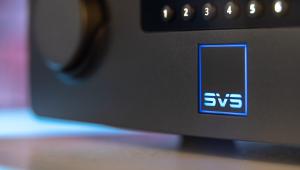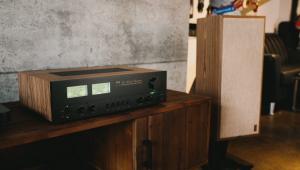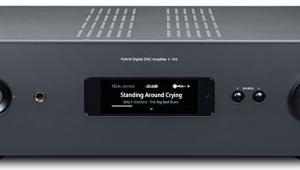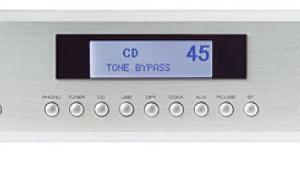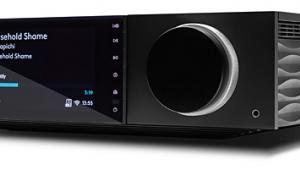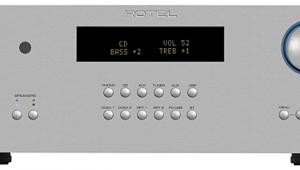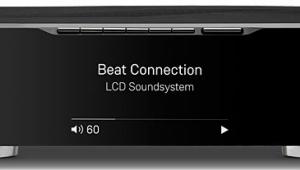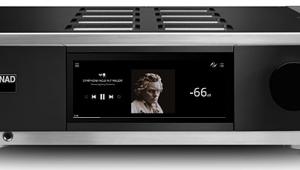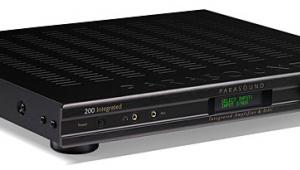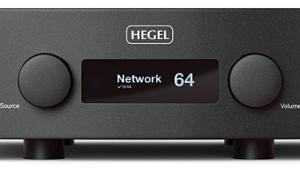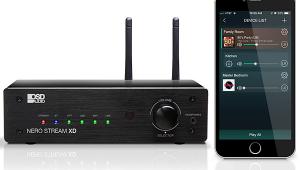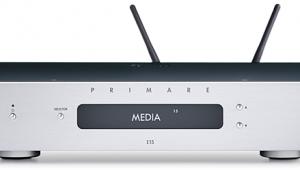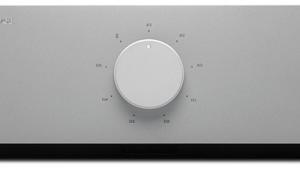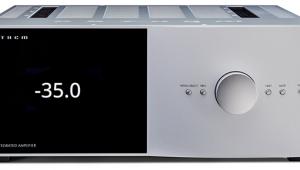Marantz Model 40n Streaming Integrated Amplifier Review
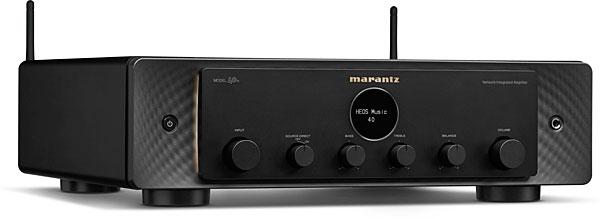
AT A GLANCE
Plus
Spacious, rich sound
Gorgeous aesthetics
Tank-like build quality
Feature-packed
Minus
Small display
Limited wired connectivity options
Lacks room correction
THE VERDICT
The Marantz Model 40n is a thoroughly modern music streaming machine that sounds great and delivers a robust set of features without losing sight of the brand’s storied past.
I attended a launch event for the Marantz Model 40n a few months ago and marveled at just how far the iconic brand has come since founder Saul Marantz took his first steps as an audio pioneer way back in 1945. In true hobbyist fashion, he modified his car radio so he could listen to it at home and, once it was up and running there, continued tinkering with it to improve its performance.
By the early 1950s, Mr. Marantz was busy working on a preamplifier for his own use. He called it the Audio Consolette and, unlike other preamps of the day, its phono stage incorporated multiple equalization curves to ensure optimal playback of virtually any record. Word of the unique design got around, prompting Marantz to build 100 units, which he quickly sold for $153 apiece. Before long sales of the Audio Consolette had exceeded 400.
Mr. Marantz knew he was onto something, so in 1953 he formed the Marantz Company to manufacture and market the Audio Consolette, which launched the following year as the Model 1. The rest, as they say, is history.
Since those early days, Marantz has produced a steady stream of highly regarded audio components, earning its rightful place in the annals of hi-fi history as an innovator. Today, Marantz is owned by Sound United, steward of such iconic brands as Boston Acoustics, Bowers & Wilkins, Classé, Definitive Technology, Denon, and Polk.
Like the Model 1 preamp, the Marantz Model 40n contains a phono stage designed to work well with almost any record. It also houses an integrated amplifier and dedicated headphone output as well as something Saul Marantz probably couldn't have imagined—a music streamer.
Features
Weighing in at almost 37 pounds, the Model 40n is a mid-tier member of Marantz' integrated amplifier lineup. It derives inspiration, both inside and out, from the company's Model 30 ($2,999), although that component doesn't contain a streamer. Like all of Marantz's top products, the 40n is manufactured at the company's Shirakawa Audio Works factory, 115 miles northeast of Tokyo.
Many of today's streaming amplifiers have a digital preamp stage and use class-D amplification modules sourced from third parties. Not the Model 40n. In a nod to the old school, it's all analog and boasts a traditional class-AB amp section that relies on four output transistors per channel to deliver 70 watts a side into 8 ohms. It's also equipped with a 100-step electronic volume control, permitting the use of a variable gain setting at the preamp-level, which optimizes signal-to-noise ratio, according to Marantz.
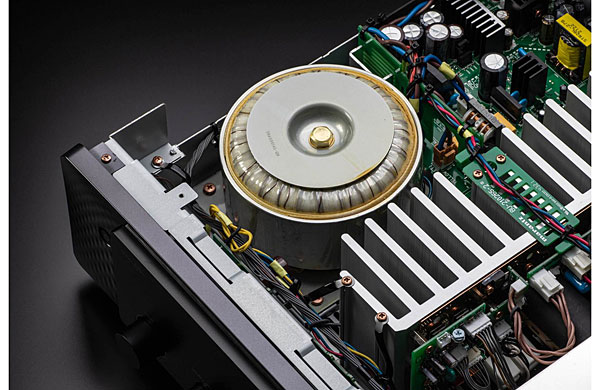
A pair of proprietary Hyper-Dynamic Amplifier Modules (HDAM) sit between the volume attenuator and amplification. Marantz credits these tiny circuits with not only lowering noise and distortion but expanding dynamic range and frequency response over traditional operational amplifiers ("op-amps"). HDAM circuitry is also used for the 40n's headphone output, which provides adjustable gain settings to accommodate a wide variety of headphones.
Marantz says the Model 40n is a good match for speakers that are difficult to drive thanks to the use of a linear power supply, featuring a large, double-shielded toroidal transformer built to deliver high current on demand.
Whereas the Model 30 integrated amp has a phono stage that accommodates moving coil and moving magnet cartridges, the Model 40n supports only moving-magnet cartridges but does so with two amplification stages, which is said to lower gain and distortion.
Stepping into the digital realm, the Model 40n uses an ESS ES9016 digital-to-analog converter (DAC) to process PCM up to 24-bit/192kHz and DSD up to 5.6MHz (Double DSD), the latter when streaming through the Heos platform (more on that in a moment).
The Model 40n offers a choice of two digital filters. The default setting is Filter 1, which exhibits a short impulse response said to reduce pre- and post-echo, while allowing for the flow of a large amount of audio information for improved stereo imaging and soundstaging. Filter 2 is said to achieve more analog-like sound by invoking an asymmetrical impulse response that results in a post-echo that's slightly longer than the pre-echo.
There's also a Lock Range feature which, according to Marantz, improves the performance of digital streams by reducing jitter. Three settings are available: narrow, medium, and wide, the last of which is the default setting. Narrow is said to provide clearer sound, though the setting can expose unwanted operational noise if the quality of the incoming signal is poor.
Heos, the wireless streaming platform developed by Marantz sister company Denon, is natively supported on Android, iOS, and Kindle-based mobile devices and enables the 40n to play the same or different songs in multiple zones around the home. Heos can also grab music from a home server via a UPnP (Universal Plug and Play)/DNLA share and "broadcast" audio received via its phono or digital inputs to Heos-enabled devices around the home.
The Heos platform provides access to a number of streaming services, including Amazon Music HD, Apple Music, Deezer, iHeart Radio, Pandora, Sirius XM, Spotify (which is controlled via Spotify's own app), Tidal, and TuneIn internet radio. Wireless connectivity is also available via Apple Airplay 2, Spotify Connect, Bluetooth, and Wi-Fi. A USB type-A port allows the Model 40n to play audio files stored on an external USB or Network Attached Storage (NAS) drive over the Heos network.
The Model 40n is Roon Tested, which means it has been profiled for compatibility with Roon music- management/streaming software, but there's no collaboration between Roon Labs and Marantz. The 40n also supports Control4's smart-home control system and voice control through the Siri, Alexa, Google, and Josh.ai platforms.
Striking is how I would describe the Model 40n's front panel with its backlit aluminum center plate, textured plastic back plate, and 2-inch round display, which shows operation status and contains a remote-control sensor and protection-circuit indicator that blinks if something is awry. Marantz says switching off the display (as well as the USB-Type-A port and Wi-Fi and Bluetooth functions) reduces noise.
Below the display is a row of knobs for selecting an input, turning on the source-direct mode (which defeats the tone controls), and adjusting bass, treble, channel balance, and volume. To the left of the center plate is the power button and to the right a ¼-inch headphone jack. The LEDs that create the soft glow around the edges of the center plate can be turned off, dimmed, or even synced to the brightness of the display.
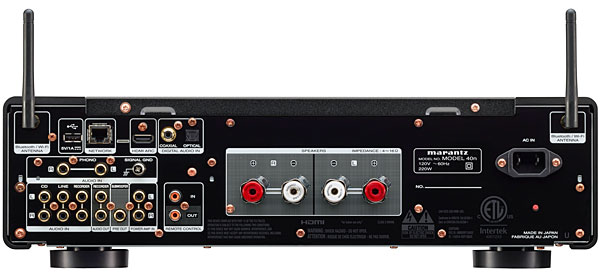
Moving to the rear panel, which is made of steel and dotted with copper-plated screws, there's a centrally located stereo set of speaker terminals, which accept bare wire or banana/spade connectors. Otherwise, connections are mostly grouped on the left side and include HDMI ARC (Audio Return Channel), which facilitates audio playback from a TV or gaming console, coaxial and optical digital inputs, the previously noted USB type-A port, and four stereo sets of RCA analog inputs for connecting a turntable (with signal ground), two analog sources, and a tape recorder (with a corresponding stereo output for monitoring a recording in progress—another nod to the old school).
There's also a stereo "power amp in" for connecting a preamplifier, which allows the 40n to be used as a power amp, and a subwoofer output with a selectable crossover setting (40, 60, 100, and 120 Hz). Remaining connections include an Ethernet port, in/out remote-control jacks for connecting a compatible Marantz component, antenna connectors for Bluetooth and Wi-Fi, and, on the far right side, an IEC power inlet and bright red firmware reset button.
- Log in or register to post comments


